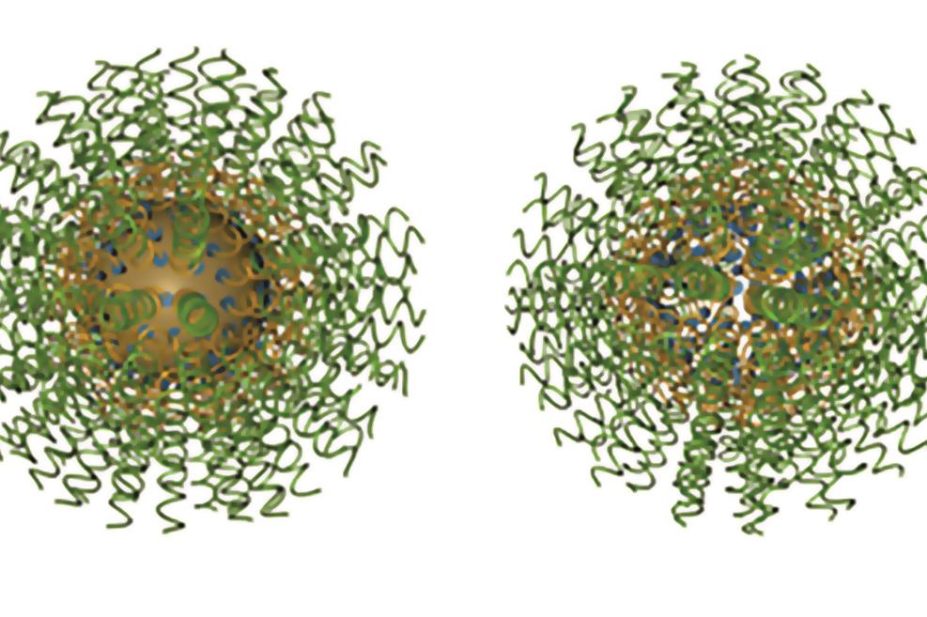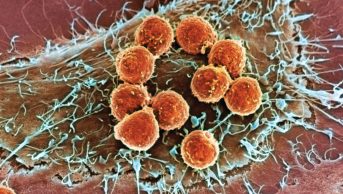
Nanobrien / Wikimedia Commons
Short nucleic acids mounted on to nanoparticles could prove to be novel immunomodulators, according to research published in PNAS[1]
on 16 March 2015.
Researchers from AuraSense Therapeutics, Illinois, tested the therapeutic efficacy of furry nanoballs called spherical nucleic acids (SNAs) in mice with two conditions: lymphomas and non-alcoholic steatohepatitis (NASH; a fatty liver condition with inflammation).
Scavenger receptors that reside on cells take up the SNAs and relay them to endosomes, the housekeeping organelles that sort out beneficial cell entries from harmful ones. The endosomal toll-like receptors (TLR) recognise their patterns and kick-start suitable immune reactions by either stimulating or regulating the immune system.
SNAs are made by tethering short RNA or DNA nucleotides called oligonucleotides (ODNs) on to gold, silver or fat-molecule-based nanoparticles. SNAs then become potential therapeutic platforms as they do not fall prey to cellular nucleases like their linear counterparts.
ODNs mounted as an SNA can act like a TLR agonist or antagonist, depending upon the disease in question. Accordingly, the SNA stimulates or regulates the immune system.
Upon challenging the lymphoma mice with TLR agonist SNAs, the scientists found a stimulated immune response: an up to 80-fold increase in the SNAs’ potency and 700-fold higher antibody titers compared with the linear ODNs, making the mice free of lymphomas. A similar experiment in NASH mice with TLR antagonist SNAs showed a 30% greater reduction in NASH fibrosis compared with the linear ODNs.
It is the multivalent presentation of ODNs that make the SNAs better therapeutic agents compared with their linear counterparts, says Sergei Gryaznov, a scientist at AuraSense Therapeutics and one of the lead authors of the paper.
However, the researchers have a few unanswered questions, such as the fate of the nanoparticle core after the ODNs interact with immune cells, as well as their toxicity and immunogenicity. Gryaznov says the company has started looking into these questions already.
“The ease of targeting immune cells with oligos [ODNs] can be an advantage for treatment of cancer or autoimmune diseases,” says Marcin Kortylewski, at the City of Hope, Duarte, California, who was one of the reviewers of the paper.
Kortylewski says researchers in this field need to understand the full mechanisms of cellular uptake to make the best use of this strategy. Nevertheless, he is optimistic that within three to five years this could be solved before SNAs reach the clinic. “I would love to see these immunomodulatory reagents moving towards the clinic,” he adds.


